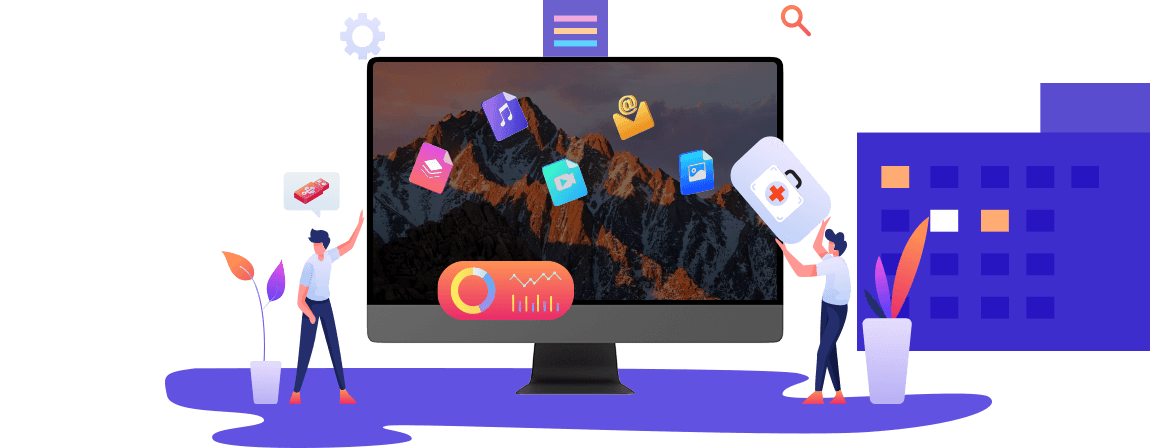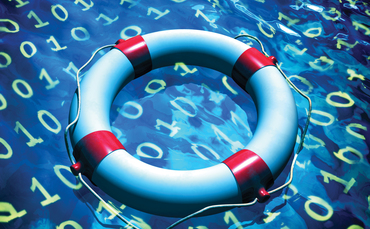Macos For Disaster Recovery
Reinstall from macOS Recovery
- Macos For Disaster Recovery Program
- Macos For Disaster Recovery Time
- Macos For Disaster Recovery Time
- Macos For Disaster Recovery Center
- Disaster Recovery Services
- Macos Recovery Partition
- Macos Recovery Keys
macOS Recovery makes it easy to reinstall the Mac operating system, even if you need to erase your startup disk first. All you need is a connection to the Internet. If a wireless network is available, you can choose it from the Wi-Fi menu , which is also available in macOS Recovery.
Dec 06, 2018 Disaster recovery, on the other hand, refers to the plan and processes for quickly reestablishing access to applications, data, and IT resources after an outage. That plan might involve switching over to a redundant set of servers and storage systems until your primary data center is functional again. Disaster Recovery. Restore your system and data instantly once disaster strikes, and get your machine back to working order quickly. Backup Modes. EaseUS Todo Backup for Mac is a professional backup software for your backup, archive, disk cloning, and folder sync in macOS. Backup and Disaster Recovery Backing up your data is a lot like flossing your teeth; you know you need to do it, but it’s often easy to overlook. But in times of disaster, whether natural or man-made, a solid backup and business continuity strategy can mean the difference between bankruptcy or a quick return to business as usual.
1. Start up from macOS Recovery

To start up from macOS Recovery, turn on your Mac and immediately press and hold one of the following sets of keys on your keyboard. Release the keys when you see an Apple logo, spinning globe, or other startup screen.
Command (⌘)-R
Reinstall the latest macOS that was installed on your Mac (recommended).
Option-⌘-R
Upgrade to the latest macOS that is compatible with your Mac.

Shift-Option-⌘-R
Reinstall the macOS that came with your Mac, or the closest version still available.
You might be prompted to enter a password, such as a firmware password or the password of a user who is an administrator of this Mac. Enter the requested password to continue.
When you see the utilities window, you have started up from macOS Recovery.
2. Decide whether to erase (format) your disk
You probably don't need to erase, unless you're selling, trading in, or giving away your Mac, or you have an issue that requires you to erase. If you need to erase before installing macOS, select Disk Utility from the Utilities window, then click Continue. Learn more about when and how to erase.
3. Install macOS
When you're ready to reinstall macOS, choose Reinstall macOS from the Utilities window. Then click Continue and follow the onscreen instructions. You will be asked to choose a disk on which to install.
- If the installer asks to unlock your disk, enter the password you use to log in to your Mac.
- If the installer doesn't see your disk, or it says that it can't install on your computer or volume, you might need to erase your disk first.
- If the installer is for a different version of macOS than you expected, learn about macOS Recovery exceptions.
- If the installer offers you the choice between installing on Macintosh HD or Macintosh HD - Data, choose Macintosh HD.
Please allow installation to complete without putting your Mac to sleep or closing its lid. During installation, your Mac might restart and show a progress bar several times, and the screen might be empty for minutes at a time.
If your Mac restarts to a setup assistant, but you're selling, trading in, or giving away your Mac, press Command-Q to quit the assistant without completing setup. Then click Shut Down. When the new owner starts up the Mac, they can use their own information to complete setup.
May 15, 2020 The El Capitan installer is downloaded to the /Applications folder, with the file name Install OS X El Capitan. If you have already installed El Capitan and wish to now create a bootable installer, you can force the Mac App Store to re-download the installer. Make bootable usb for mac os el capitan. To do in Windows, we already shared a very specific instruction from here: Make Bootable Installation USB from Mac OS X.DMG on Windows PC. At for Mac users, there will be 2 doable methods. METHOD 1: Using DiskMaker X. Run, DiskMaker X, then.choose El Capitan (10.11). Next, choose Use another Copy. Double click on El Capitan.DMG to mount it. Mar 12, 2020 On a Mac that is compatible with El Capitan, open the disk image and run the installer within, named InstallMacOSX.pkg. It installs an app named Install OS X El Capitan into your Applications folder. It installs an app named Install OS X El Capitan into your Applications folder. To create a bootable El Capitan installer drive, you need the El Capitan installer from the Mac App Store and a Mac-formatted drive that’s big enough to hold the installer and all its data. Apr 03, 2016 How to Create a Bootable MAC OS X El Capitan USB Flash Drive - Duration: 4:40. Sakitech 140,475 views. Language: English Location: United States Restricted Mode: Off.
macOS Recovery exceptions
The version of macOS offered by macOS Recovery might vary in some cases:
- If macOS Sierra 10.12.4 or later has never been installed on this Mac, Option-Command-R installs the macOS that came with your Mac, or the closest version still available. And Shift-Option-Command-R isn't available.
- If you erased your entire disk instead of just the startup volume on that disk, macOS Recovery might offer only the macOS that came with your Mac, or the closest version still available. You can upgrade to a later version afterward.
- If your Mac has the Apple T2 Security Chip and you never installed a macOS update, Option-Command-R installs the latest macOS that was installed on your Mac.
- If you just had your Mac logic board replaced during a repair, macOS Recovery might offer only the latest macOS that is compatible with your Mac.
If you can't get macOS Recovery to offer the installer you want, you might be able to use one of the other ways to install macOS.
Macos For Disaster Recovery Program
Other ways to install macOS
Macos For Disaster Recovery Time
- You can also install macOS from the App Store or Software Update preferences. If you can't install macOS Catalina, you might be able to install an earlier macOS, such as macOS Mojave, High Sierra, Sierra, El Capitan, or Yosemite.
- Or create a bootable installer disk, then use that disk to install macOS on your Mac or another Mac.
OS X Recovery is only compatible with OS X Lion and Mountain Lion, and you have Snow Leopard. In your case, you have to use the Snow Leopard DVD you purchased to upgrade your Mac or the Mac OS X DVD that came with your Mac.
Nvidia GPUs receive driver updates soon after each version update of OS X. Only one driver is released by Nvidia and it includes support for all of their modern GPUs. You will not find individually named Nvidia drivers for OS X, they are all titled 'Quadro & Geforce Mac OS X Driver Release xxx.xx.xxxxx'. Web drivers nvidia. Download drivers for NVIDIA products including GeForce graphics cards, nForce motherboards, Quadro workstations, and more. Update your graphics card drivers today. Download drivers for NVIDIA products including GeForce graphics cards, nForce motherboards, Quadro workstations, and more. Update your graphics card drivers today. In order to run macOS Applications that leverage the CUDA architecture of certain NVIDIA graphics cards.
sleeknub wrote:
Everywhere I look I find that OS 10.6.8 CANNOT enter Internet Recovery mode, but I held down command + R at startup and was able to enter it
Macos For Disaster Recovery Time
Macos For Disaster Recovery Center
That means that your comptuer had Lion in the past and an old owner (or you) installed the firmware update that included Internet Recovery.
Disaster Recovery Services
As you have Internet Recovery, you can consider the option of using Disk Utility from Internet Recovery, but this will clone a partition you do not need: Recovery HD.
Macos Recovery Partition
Macos Recovery Keys
Because of this, insert the Snow Leopard DVD and hold the C key while your Mac is starting. Choose your language, go to Utilities menu (on the menu bar) > Disk Utility, and clone your hard disk to the SSD > http://pondini.org/OSX/DU7.html
Aug 16, 2013 10:34 PM